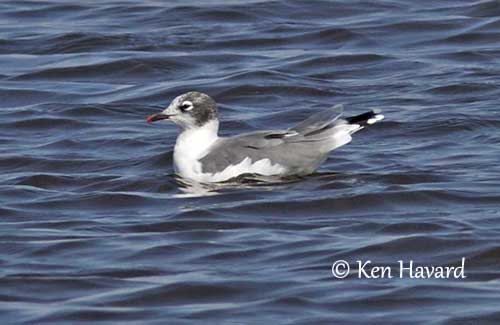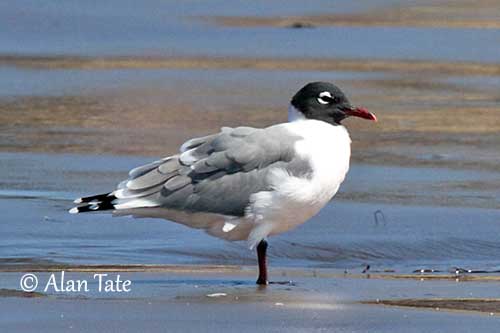
Fr: Mouette de Franklin
Ang: Franklin’s Gull
All: Präriemöwe
Esp: Gaviota Pipizcan
Ita: Gabbiano di Franklin
Nd: Franklins Meeuw
Sd: präriemås
Photographers:
Roger Ahlman
Pbase Galleries Peru and Ecuador
Ken Havard
My Bird Gallery & Flickr gallery 1 & Flickr gallery 2
Alan & Ann Tate
AA Bird Photography
Text by Nicole Bouglouan
Sources:
HANDBOOK OF THE BIRDS OF THE WORLD Vol 3 by Josep del Hoyo-Andrew Elliott-Jordi Sargatal - Lynx Edicions - ISBN : 8487334202
BIRDS OF THE GREAT BASIN – by Fred A. Ryser - Univ of Nevada Pr -ISBN: 0874170796
A GUIDE TO THE BIRDS OF MEXICO AND NORTHERN CENTRAL AMERICA by Steve N. G. Howell, Sophie Webb - Oxford University Press - ISBN: 0198540124
FIELD GUIDE TO THE BIRDS OF NORTH AMERICA - National Geographic Society -ISBN: 0792274512
THE HANDBOOK OF BIRD IDENTIFICATION FOR EUROPE AND THE WESTERN PALEARCTIC by Mark Beaman, Steve Madge - C. Helm - ISBN: 0713639601
All About Birds (Cornell Lab of Ornithology)
Bird Web (Seattle Audubon Society)
Neotropical Birds – Cornell Lab of Ornithology
South Dakota Birds and Birding – (Terry L. Sohl)
What Bird-The ultimate Bird Guide (Mitchell Waite)
Wikipedia, the free encyclopaedia
Franklin’s Gull
Leucophaeus pipixcan
Charadriiformes Order – Laridae Family
INTRODUCTION:
The first Franklin’s Gull was taken during an 1823 expedition led by Sir John Franklin who gave the bird its name. However, this species was first named “Franklin’s Rosy Gull” for its pale pink breast and belly, and it is sometimes named “Prairie Dove” for its dove-like size.
The Franklin’s Gull breeds inland North America and winters off W coast of South America.
This species has expanded its breeding range in recent decades, and there are now several breeding colonies in the Great Basin, involving an expansion of the nesting range towards west. The first breeding colony of the Great Basin was discovered by Wetmore at the Bear River marshes in 1916. A second breeding colony appeared again in the Great Basin at Malheur Lake around 1957. Now, the Franklin’s Gull is a common breeding species in this region, and it is considered today a new member of the local avifauna.
The population is slightly and slowly increasing in North America, but this gull is vulnerable to human disturbance during the breeding cycle. It is also threatened by water levels and drainage of wetlands. But the Franklin’s Gull is currently not globally threatened.

DESCRIPTION OF THE BIRD:
Biometrics:
Length: 32-38 cm
Wingspan: 87-91 cm
Weight: 203-371 g
The Franklin’s Gull is a small, dove-like gull. The breeding adult has white plumage with variably tinged pink underparts. The upperwing is slate grey with tipped white secondaries and inner primaries. The five outer primaries have black subterminal band and white tips, forming a black-and-white pattern at wing tip. There is a broad, white trailing edge. The tail is pale grey with white outer rectrices. The underwing is pale greyish.
On the black head, we can see a conspicuous white eyering. The black extends on head, nape, chin and throat, and forms a hood.
The bill is dull red. The eyes are dark brown. Legs and webbed feet are red-orange to blackish-brown.
Both adults are similar.
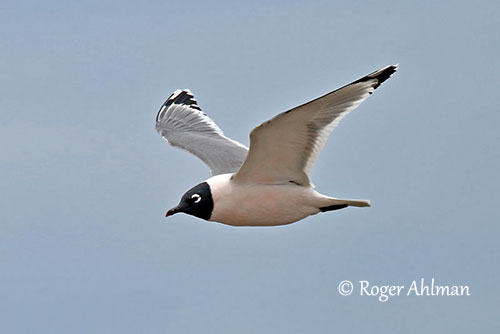
The non-breeding adult has dark half-hood on hind crown and nape, and including the eyes, still surrounded by the white eyering. Bill, legs and feet are blackish.
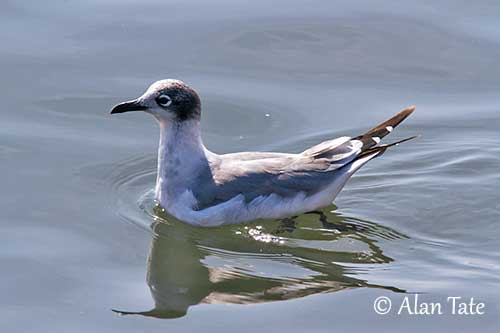
The first winter has brownish mantle with all-black primaries. The hood is mostly greyish-brown and extends over sides of face, top of head and hind crown. Forehead, chin and throat are white. The white eyering is conspicuous in all plumages.
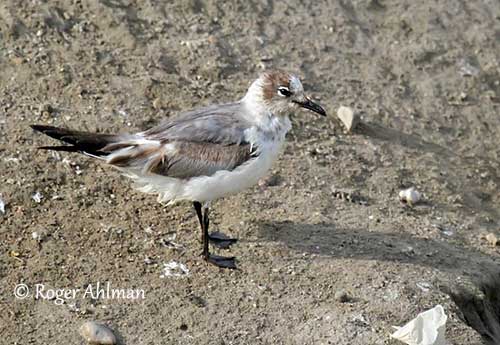
RANGE:
The Franklin’s Gull breeds inland North America, in both Canada and USA. In Canada, it breeds from E Alberta to SW Manitoba, and in USA, from Montana to Minnesota. There are scattered breeding populations in N Rocky Mountains and Great Basin. It winters off W South America, S to Chile.
HABITAT:
The Franklin’s Gull breeds in extensive inland marshes with fairly deep water, inland lakes with emergent vegetation and in dense cattails of genus Typha. It winters along coasts, in bays and estuaries.
During summer and migration, it feeds in cultivated fields, prairies, flooded pastures, marshes and estuaries.
CALLS AND SONGS: SOUNDS BY XENO-CANTO
The Franklin’s Gull usual call is a soft “kruk” while foraging. It also gives strident calls “ha-ha-ha-ha-ha-ha” similar but higher-pitched than those of the Laughing Gull. It utters a loud, musical, plaintive “po-lee” on the breeding sites. The long call descends while accelerating.
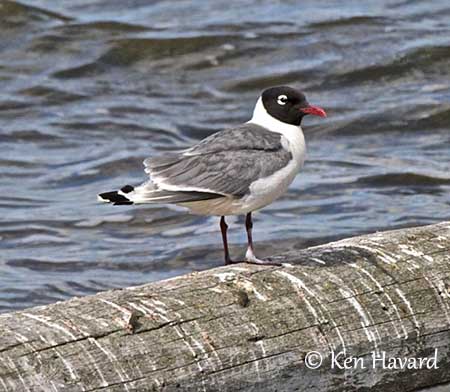
BEHAVIOUR IN THE WILD:
The Franklin’s Gull feeds mainly on aquatic invertebrates and insects including grasshoppers, and leeches, earthworms, snails, crayfish and seeds during summer. During winter, it takes numerous small fish and crustaceans to supplement its insect diet.
This species forages along the coasts by fishing in the surf, but also at fish factories and rubbish dumps. It may follow the fishing boats too. During the breeding season, it feeds near the colonies, often in cultivated areas.
It forages by walking on the ground, wading and swimming, and also performs aerial hawking for insects and follows ploughs.
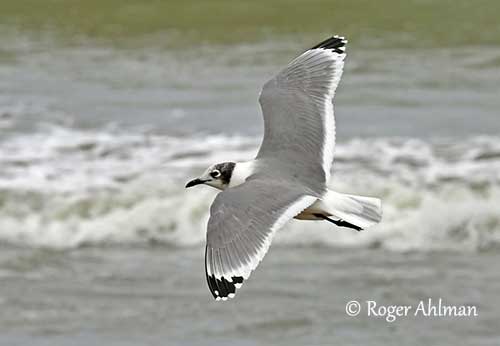
The Franklin’s Gull is a colonial nester. The pairs form just before their arrival at the colonies. Some courtship displays can be observed, with mates standing upright while turning the head alternately towards and away from each other. The male may offer food to the female.
They are very gregarious and form large colonies of hundreds of pairs, sometimes more than 10,000 pairs. Some colonies include various species such as herons, ibises, grebes, terns and other gull species. The sites of the colonies are vulnerable to fluctuating water levels and droughts.
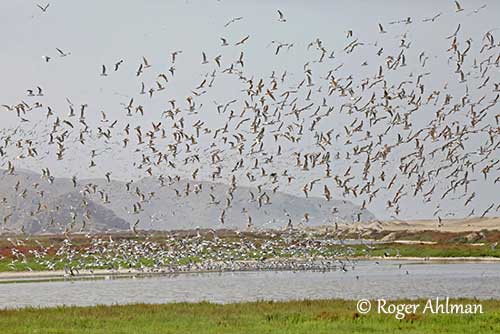
The Franklin’s Gull is migratory and moves S after the breeding season. They migrate in flocks through the Great Plains and along the E coastal plains of Mexico. They cross the Pacific at Isthmus Tehuantepec.
There are some records in Australia and New Zealand, and even Philippines. It is vagrant in many European countries such as British Islands, France and Iberia, and Atlantic Islands. It may reach the Caribbean, Trinidad, Falkland Islands, South Georgia and Tristan da Cunha and elsewhere, including Marion Island in SW Indian Ocean.
They reach Peru and Chile in September/October where they remain until early May.
The Franklin’s Gull has strong, direct flight with deep, rapid wingbeats.
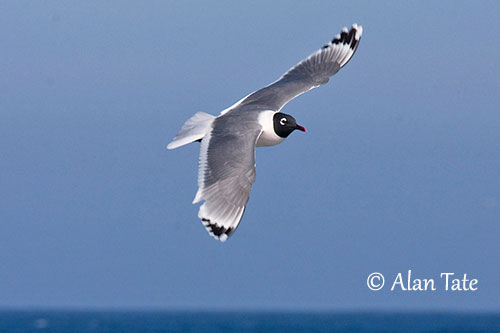
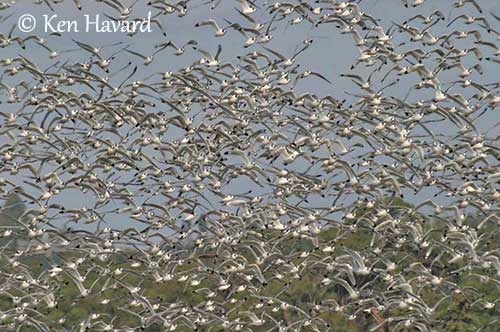
REPRODUCTION DE L’ESPECE:
The breeding season takes place in spring, with the laying during the second half of May, sometimes later depending on the range.
The Franklin’s Gull nests in marshes with deep water (50/180 cm deep). Both adults build a large, floating nest, a mass of aquatic plants including cattails and bulrushes. The structure is usually anchored to the vegetation. It requires daily maintenance because the material that is below the surface decays. The adults regularly add material, and even the chicks take material in the vicinity of the nest and add it too. They stop one or two weeks before leaving the colony.
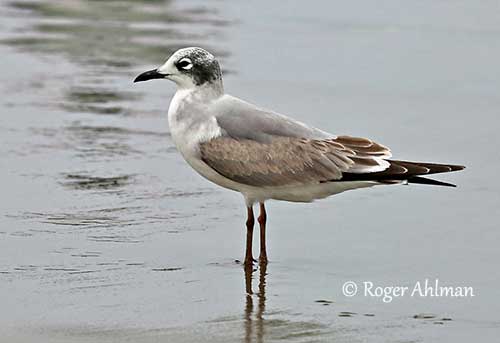
The female lays 2-3 buff, olive or brown eggs with dark markings. Both adults incubate during 23-26 days. The chicks are fed and brooded by their parents. They remain at nest at least 20 days after hatching, and stay in family group during 8-10 days, before leaving the colony and migrating.
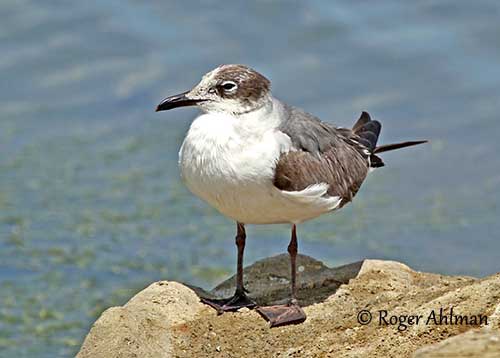
PROTECTION / THREATS / STATUS:
The Franklin’s Gull is threatened at colonies by fluctuation of water levels, drainage of marshes and droughts. These gulls are vulnerable to human disturbance during the breeding cycle and while the chicks are hatching, and they may desert the colonies following disturbance. The species is vulnerable to El Niño effect on the wintering grounds.
The population is estimated to number 1-1,5 million individuals and is suspected to be slowly increasing. But currently, the Franklin’s Gull is evaluated as Least Concern.
